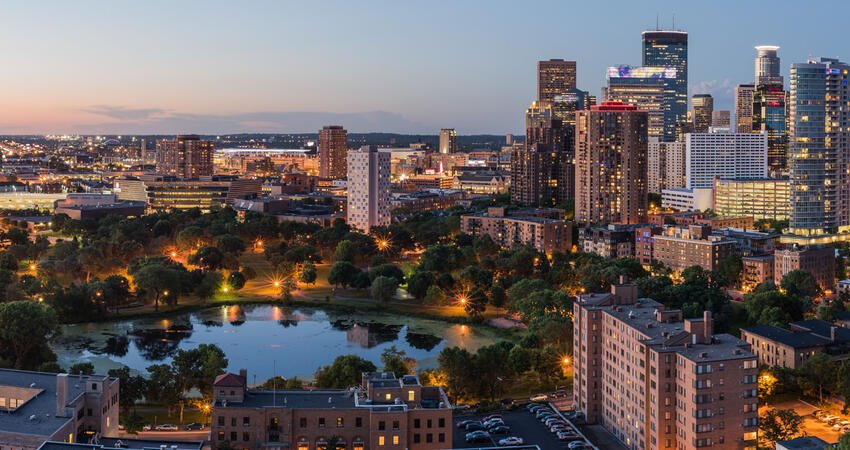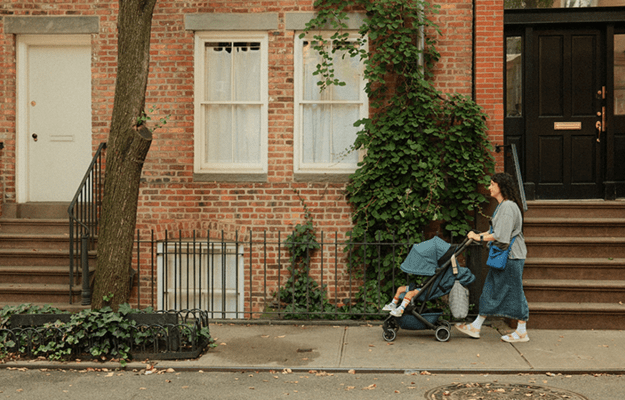
Nick Lundgren/Shutterstock
Placemaking Strategies Can Promote Greater Racial Equity in Infrastructure Investments
Congress recently passed a $1.2 trillion infrastructure bill, which has tremendous promise for improving roads and bridges ($110 billion allocation) and reconnecting communities divided by transportation infrastructure ($1 billion). Although these allocations are smaller than those in the proposed budget, state and local policymakers still have opportunities to creatively distribute the funding to improve neighborhoods and cities. When done thoughtfully, these infrastructure investments can activate space in ways that draw in and welcome community members and foster a sense of belonging and excitement.
Historically, access to public space across the US has been inequitable. Structural drivers, including redlining, racial segregation, discriminatory planning, and divestment in communities of color and immigrant communities, have created sharp divides in neighborhoods. Streets and roadways have cut off communities from services and opportunities.
White affluent neighborhoods are often favored for infrastructure investments at the expense of communities of color, who get displaced, priced out, or don’t have access to opportunities. Highway construction in Chattanooga, Detroit, Miami, and other cities has displaced Black communities—residents and businesses—and has destroyed the social and economic fabric of these places. Local governments have targeted efforts to address highway-induced segregation, but it’s too late for communities where the residents have already been displaced. Because of this spatial segregation, people of color are often forcibly concentrated on the periphery of cities, in less-desirable areas, and with less access to good schools, jobs, food, and other basic needs.
Policymakers can address these long-standing and segregating practices by improving street infrastructure through placemaking and keeping equity and community engagement in mind. Placemaking supports the design of places to reflect the community’s priorities and promote racial equity. When people identify with and enjoy a place, they often become stewards in sustaining its operations and maintenance, which can encourage investment. Effective community development bridges opportunity gaps across race and income lines, but placemaking must be centered in infrastructure plans to ensure effective community development.
If policymakers want to achieve greater racial equity, they can promote and fund placemaking activities in three key ways that align equitable placemaking with infrastructure investments.
1. Using streets and sidewalks for community programming
Activating streets and sidewalks can encourage walkability, increase accessibility, and foster meeting space for a diversity of community members. As Fred Kent at the Project for Public Spacessummarizes, “If you plan cities for cars and traffic, you get cars and traffic. If you plan for people and places, you get people and places.” Many urbanists argue for the broader use of streets and sidewalks by planning activities to make destinations through art, music, restaurants, shops, and other placemaking strategies.
In downtown Milwaukee, community organizations created a night market to encourage residents to visit downtown outside of business hours. The NEWaukee Night Market is a free outdoor event held during the summer months to showcase local vendors, performers, and artists. Milwaukee has some of the highest segregation levels across US cities and has a large prosperity gap between white and Black residents, but during the night market, the main artery of downtown becomes more than just a through street—it’s a transformed cultural destination. The market brings together a mix of people from across the city and region by fostering a diverse and welcoming space for activities, demonstrating how coupling infrastructure and placemaking investment can bridge divides.
2. Exploring tactical changes made during the pandemic can yield long-term ideas
The pandemic demonstrated that people want to gather in healthy ways close to where they live. Local government and community leaders piloted projects to repurpose streets from their original car-focused function to better serve pedestrians, and they relaxed approval processes and procedures to permit alternate uses of streets and public space. This model of tactical urbanism, whereby interventions are tested in a small-scale, low-cost way before being made permanent, can improve the well-being of community members and encourage diversity.
Short-term actions can lead to long-term changes that reclaim road infrastructure for greater social benefits, such as community belonging and social cohesion. Through tactical urbanism, infrastructure investments can catalyze individual-level social outcomes of well-being and belonging and allow people to be active participants in the reimagination of where they live, which can give them more ownership of their community spaces. Investing in streets through placemaking transforms neighborhoods to improve the lives of all citizens, especially those who have been historically excluded from decisionmaking.
3. Placemaking can produce wealth-building opportunities
Infrastructure investments can spur economic development in communities, but they risk displacing individuals, especially people of color, by pricing them out of the area. Local planners and policymakers can mitigate this challenge by engaging those most susceptible to displacement. Placemaking activities that involve community members and their needs can reduce economic disparities and enhance community wealth building.
In St. Paul, Minnesota, an Asian community was at risk of losing their homes and businesses because of light rail revitalization activities. Intended to connect the Twin Cities, the light rail system could have instead had the same outcome as several other railroads and highways that have segregated US cities. To preempt this potential pitfall, the Asian Economic Development Association launched a local economic development and creative placemaking strategy to protect the Asian community. The Little Mekong Asian Business and Cultural District brought opportunities to attract visitors, promote small business, and grow locally based wealth, while the train line and activated space promoted economic development that fostered a more thriving community.
Joint infrastructure and placemaking efforts demonstrate that the revival of places must include physical and social investments. Reimagining communities, especially during the pandemic, requires strengthening more than just our cities’ bricks and mortar. As policymakers, planners, and community organizations tap into the funding earmarked for infrastructure, they can deepen community investments by doubling down on economic development and advancing racial equity.
This post was originally published on Urban Wire, the blog of the Urban Institute.


